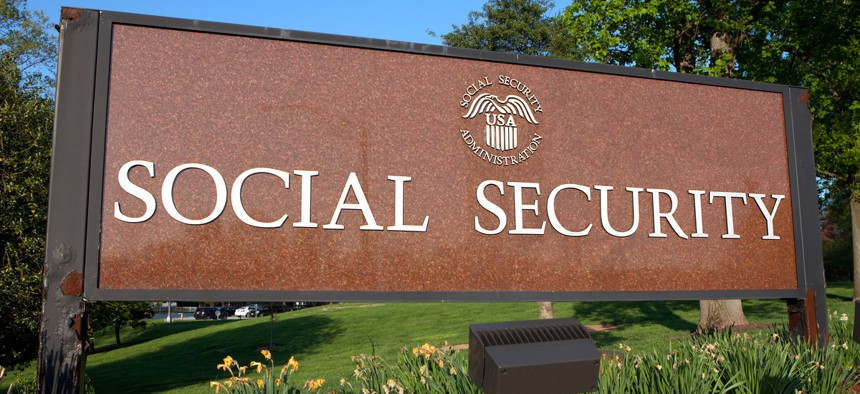Social Security Ends Telework Program for 12,000 Employees

Mark Van Scyoc/Shutterstock.com
Workers in all of the Social Security Administration’s operations components have less than two weeks to find alternate arrangements.
The Social Security Administration on Monday told employees of its operations components that it would end its six-year-old telework pilot program on Nov. 8, leaving roughly 12,000 workers scrambling to make arrangements.
The email came one day after the implementation of a new union contract between the agency and the American Federation of Government Employees, imposed by the Federal Service Impasses Panel earlier this year. That decision gave management “discretion” to adjust telework and staffing levels as needed, but union officials said they were caught off guard by the decision to simply get rid of telework altogether.
“Telework is in the contract; it’s not something that was not put in or not negotiated prior to the contract being implemented,” said Sherry Jackson, vice president of AFGE Council 220, which represents Social Security employees. “We had a long discussion about how telework works and how it will continue to work. The fact that you did that, that you took all that time from people and had employees with the expectation that it would increase, or at least maintain the status quo, it doesn’t speak well to what concern you have for your employees.”
Since 2013, 25%—around 12,000—of employees in Social Security’s operations components have been allowed to telework between one and three days per week, depending on the component. But in an email to all employees in the components, which include field offices, card centers, call centers, the workload support units and the program service centers, Deputy Commissioner for Operations Grace Kim said the program would end, citing increased workloads and backlogs.
“In recent years, Operations has faced a number of significant service challenges, including increases in wait times for customers on the 800# and in field offices, processing times for program workloads, and PSC backlogs,” Kim wrote. “[In] order to focus all of our resources on providing service to our customers, I have decided to end the telework pilot in Operations at this time.”
The agency declined to provide evidence of “service challenges” or increased customer wait times to AFGE. Social Security Acting Press Officer Mark Hinkle provided Government Executive with a brief statement, but declined to offer more information to back up Kim’s message.
“In order to improve service delivery and to focus all of Operations’ resources on providing service to our customers, the deputy commissioner for operations decided to end the telework pilot in Operations on November 8,” Hinkle said.
Hinkle also declined to answer questions about whether a partial hiring freeze, implemented in July by Commissioner Andrew Saul, had been lifted. Jackson said it remains in place, and impacts at least some of the operations components.
Jackson said the union is still considering its options to fight the decision. She said ending the telework program with less than two weeks of notice will decrease productivity, not improve it.
“There are things that could have [been] handled while on telework—family issues and other personal needs like appointments and what-have-you that could be handled without having to use unexpected leave—will be back on the table,” Jackson said. “With telework, you have guaranteed people on call despite what may be happening at home. They’re still able to complete the function of their duties on telework, and with that taken away, you’ll be pulling off any potential production time because you have to request leave.”
And with flu season just around the corner, Jackson said people may feel pressured to come into work while sick, spreading infections.
“You can recoup faster at home, rather than at the workplace,” she said. “Plus, it doesn’t exactly instill confidence in customers if you sound worse than they do, when they’re the ones with a disability claim. It doesn’t make us look good.”
NEXT STORY: Quick Hits






